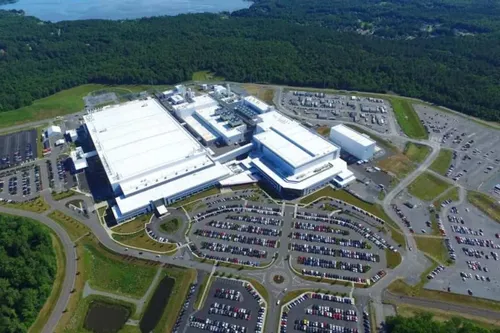Intel's $17B Chip Factory in Germany Faces Uncertainty Due to Lack of Funding
newsTuesday, 13 June 2023 at 02:44

The recent chip crisis was caused by the disruption of supply chains, as well as by the US-Chinese trade war. As a result, some Western countries decided to diversify their production. The simple way was building their own plants on US and European soil, but it seems not everything is going according to plan. Now, the Intel chip factory in Germany is facing problems.
The largest projects now face a lack of money to complete the construction of the plants. One such example has recently been seen in the case of TSMC's chip plant in Arizona, US. This investment started long ago, and it still needs more funding to be completed. There are many reasons for this lag, but the main one is lack of funding.
TSMC simply needs more money to finish the project and more tax credits, asking the US government for more. Since even US doesn't officially recognize Taiwan as a sovereign state, there aren't any double taxation avoidance agreements. So, TSMC needs to pay taxes in both the US and Taiwan. At this point, it gets more complicated. Namely, analysts predict that the cost of chips produced in the Arizona plant will be 30% higher than those coming from Taiwan.
The Intel chip factory in Germany is facing challenges
The latest problem for Western chip manufacturing has now emerged in Germany, reports Financial Times. Intel is building a $17 billion worth factory there, and it seems it now needs more money. Given that costs have risen, the company asks the government for additional subsidies. Those are needed to complete the construction of the plant and start the production.

The German government responded negatively to this request. Pointing out that there is not enough money in the budget. As a result, the construction of the Intel chip factory in Germany encountered another huge obstacle. Among those due to inflation and the rise in energy prices.
The situation in US and Germany is even worse since these countries have bigger workforce costs. The investors' agreement with the authorities remains crucial for the completion of the plant, as they are requesting additional subsidies.
It now seems that such a goal is questionable. At least in the part where it mentions the plant in Magdeburg. According to the plan, this one should produce 20% of the world's semiconductors by the year 2030.
It should be pointed out that the German government itself is divided on this issue of the Intel chip factory in Germany. The left-wing Greens and the Social Democrats are reportedly willing to allocate additional funds. On the other hand, the conservative parties oppose such a decision. Considering all the challenges which the German economy is facing, it's difficult to predict the future of this project.
Loading






